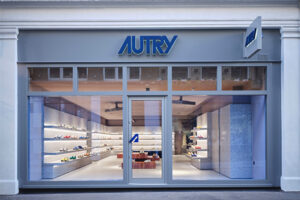While profitability is certainly important, this limited focus overlooks the overall customer experience, something that brands are using more and more in order to create a point of difference. These days, consumers want more than just goods: they want immersive, personalized experiences that make buying both fun and memorable. Success for brands is, therefore, all about maximizing the quality of the customer’s experience by transforming every square meter of their stores into opportunities for engagement, interaction, and brand awareness.
The suggestion that consumers shop with their senses is one that is gaining popularity, which is why brands have begun to introduce ways of engaging consumers on numerous sensory levels, because they believe that doing so can considerably improve the consumer’s overall shopping experience. This multi-sensory approach involves using sight, sound, smell, and touch, to create a stimulating environment that
appeals to the consumer. High-end clothing brands are excellent examples of this: ambient lighting, music, and specially selected fragrances and perfumes are frequently used to create a feeling of luxury and exclusivity in-store. Outside of fashion, the grocery sector has been doing this for some time by using the smell of bread that has been freshly baked in-store, along with the aroma of coffee, to make the shopping experience more enjoyable and engaging.
New technologies and artificial intelligence (AI), in particular, provide intriguing opportunities to improve these multi-sensory experiences. AI-powered personalization solutions can be used to adjust music, lighting, and even visual displays in real time, based on customer preferences or behaviors. Going forward, virtual and augmented reality (VR/AR) are likely to result in immersive experiences in which consumers engage with items in previously unimagined ways. Traditional advertising – frequently perceived as being both obtrusive and disruptive – is developing into a much more integrated and valuable part of the overall shopping experience.
This particular trend is arguably most visible when it comes to retail media, where adverts are very often strategically positioned at the point of sale. Designed to integrate smoothly into the overall shopping experience, retail media can improve the consumer’s experience by delivering targeted product ideas, promotions, or complementary products at the point where they are about to make a purchase. This type of advertising provides the consumer with relevant information that actually enhances their journey, rather than interrupting it.
As brands begin to invest more in providing memorable experiences, the requirement to measure the effectiveness of these methods will grow. Heat maps, customer frequency metrics, and dwell time analytics are all useful data sources that give brands a better understanding of how customers engage with different areas of a store. These technologies can help brands improve aspects such as store layout, product placement, and experiential offers, all of which can be tailored to suit customer wants and preferences. Heat maps can readily identify parts of a store that are getting the most footfall and, therefore, where interactive displays and product demonstrations might be most effective. Similarly, tracking how frequently consumers return can provide useful insight into the longterm value of experience-based strategies.
Experience tactics must be quantifiable to ensure success. Brands can constantly adjust their approaches by using data analytics and, in doing so, guarantee that every square meter of their stores is optimized not just for sales, but also in terms of the consumer’s overall shopping experience.
By embracing multi-sensory experiences, using non-disruptive advertising, and implementing measurable experience methods, brands may redefine success in ways that are more meaningful to current consumers. These techniques will not only improve the shopping experience, but also promote long-term loyalty and profitability in what remains a highly competitive market.
Retail success is no longer defined solely by the amount of income generated per square meter; it is also about how much experience can be provided in that space. However, the two are inextricably linked because the quality of the experience leads to greater interest in an outlet and that drives footfall which, in turn, increases both sales density and dwell time.

Giles Membrey
Giles Membrey is the Managing Director at Rioja Estates.







